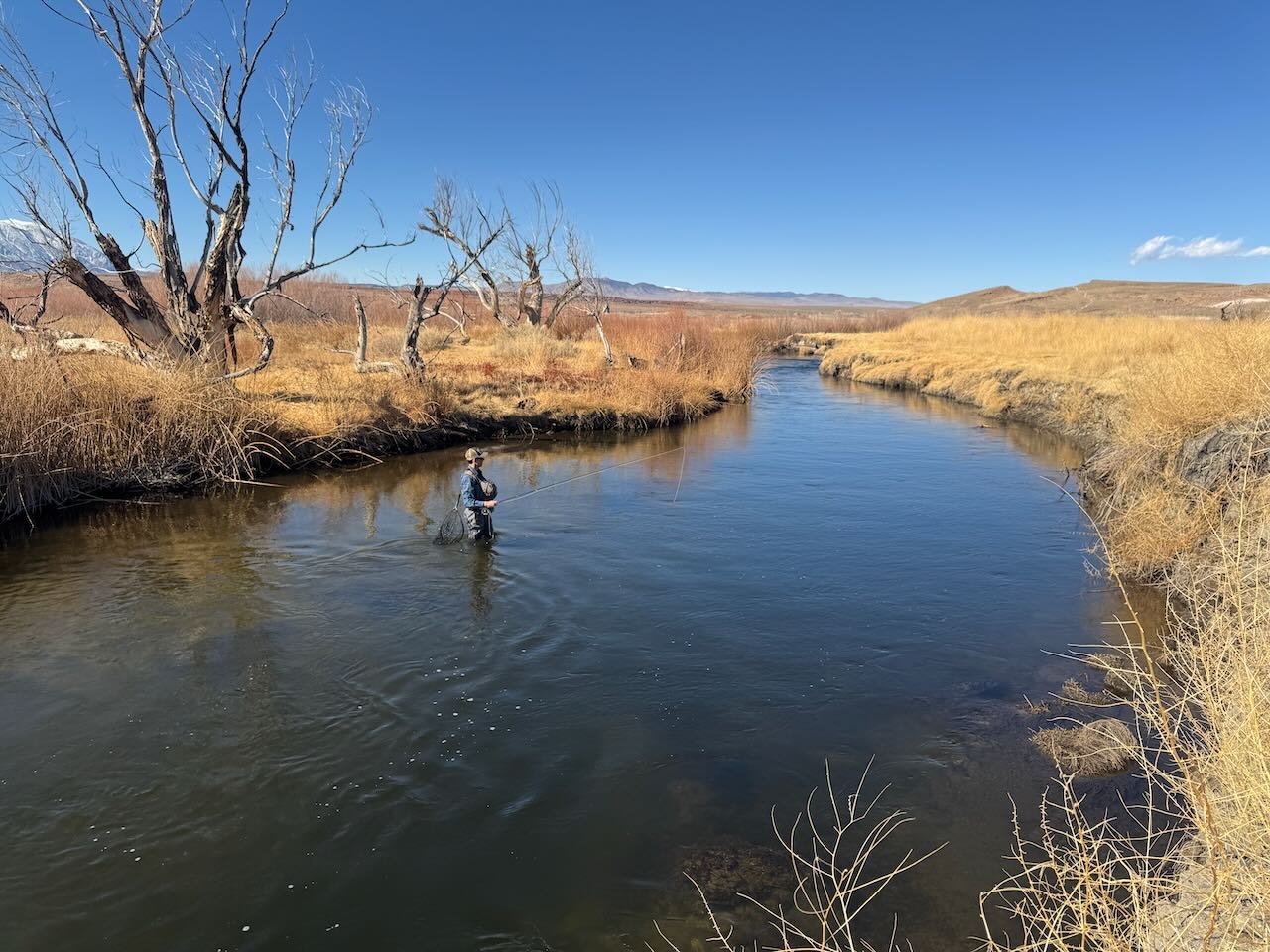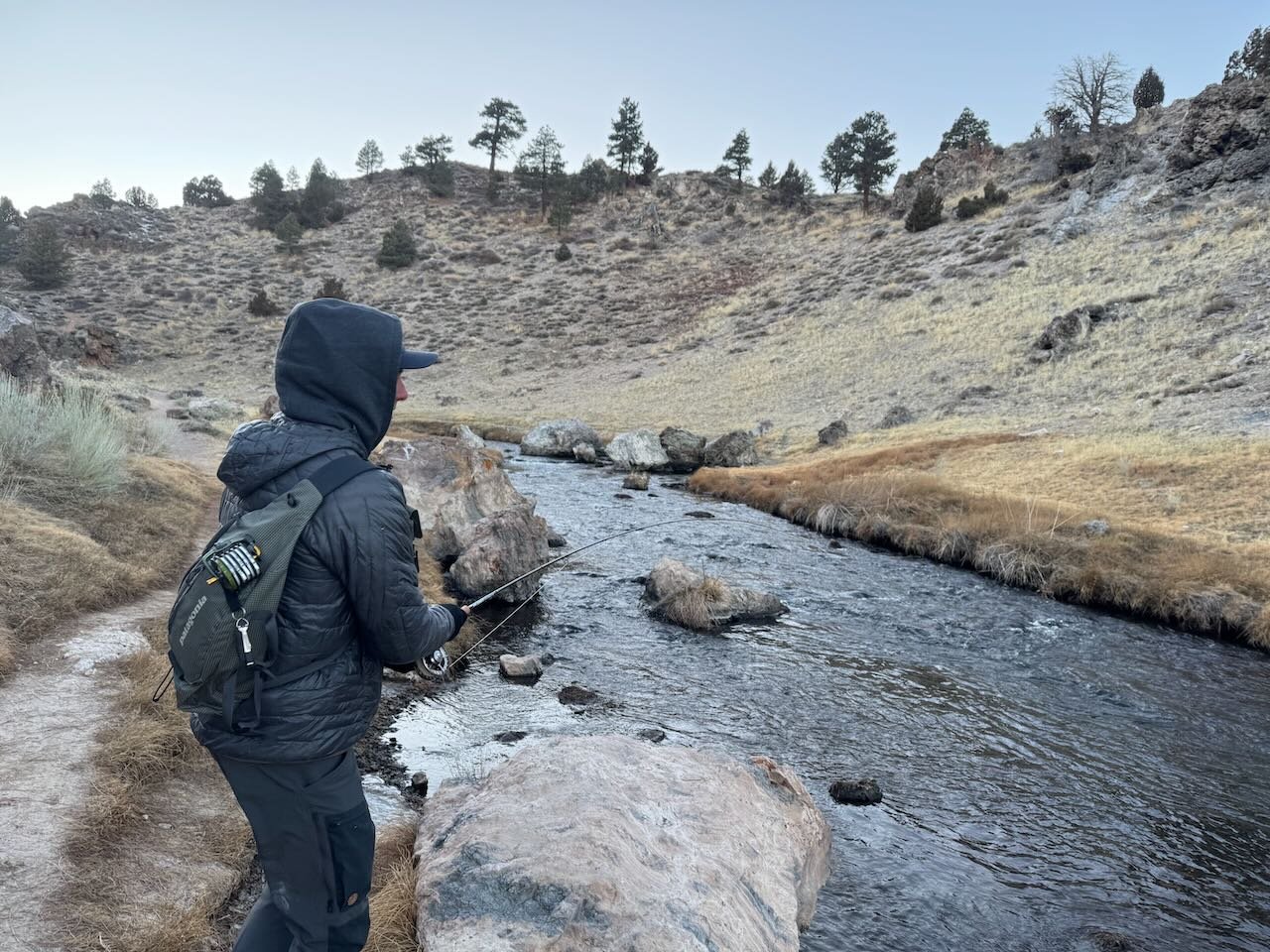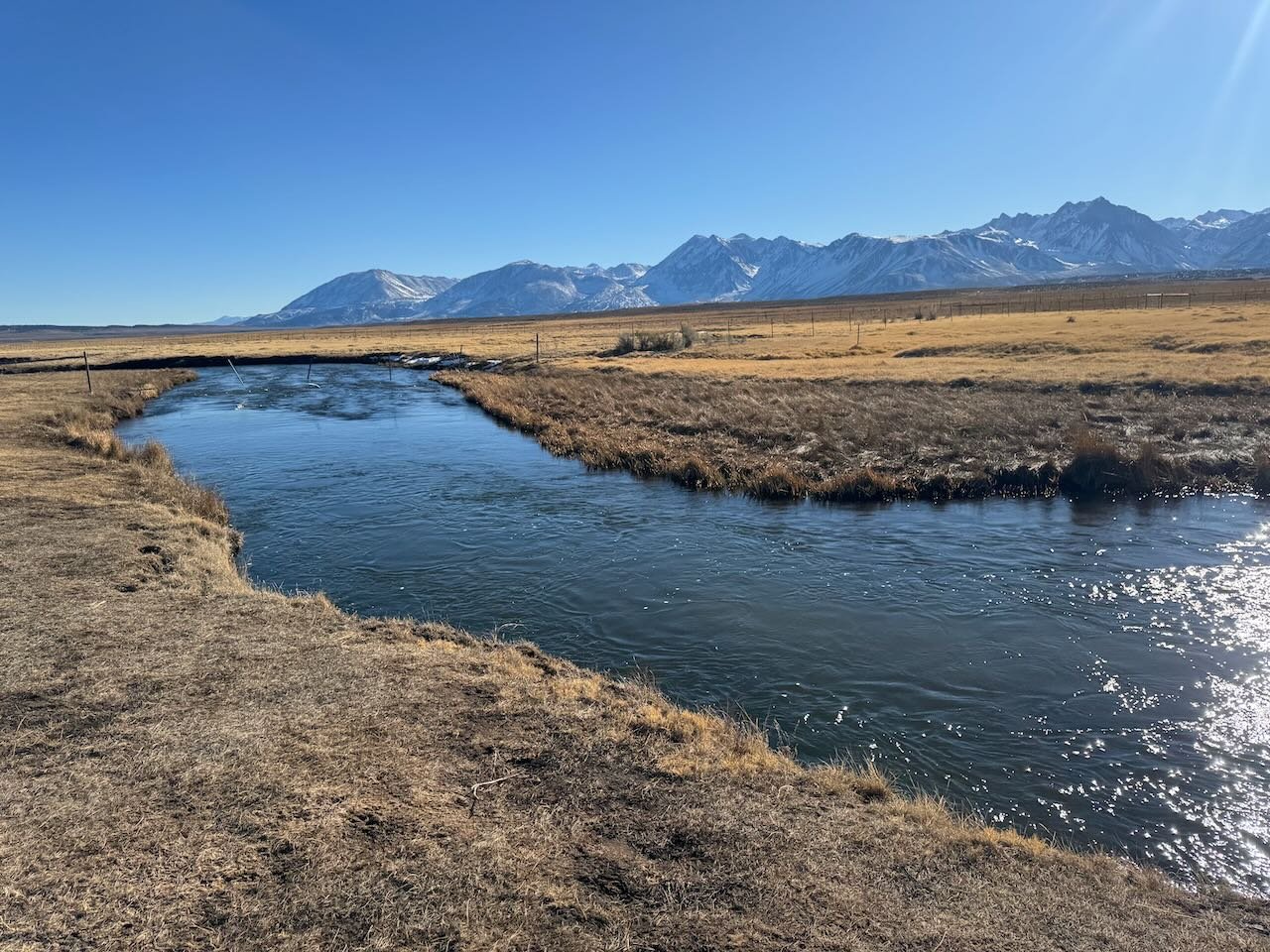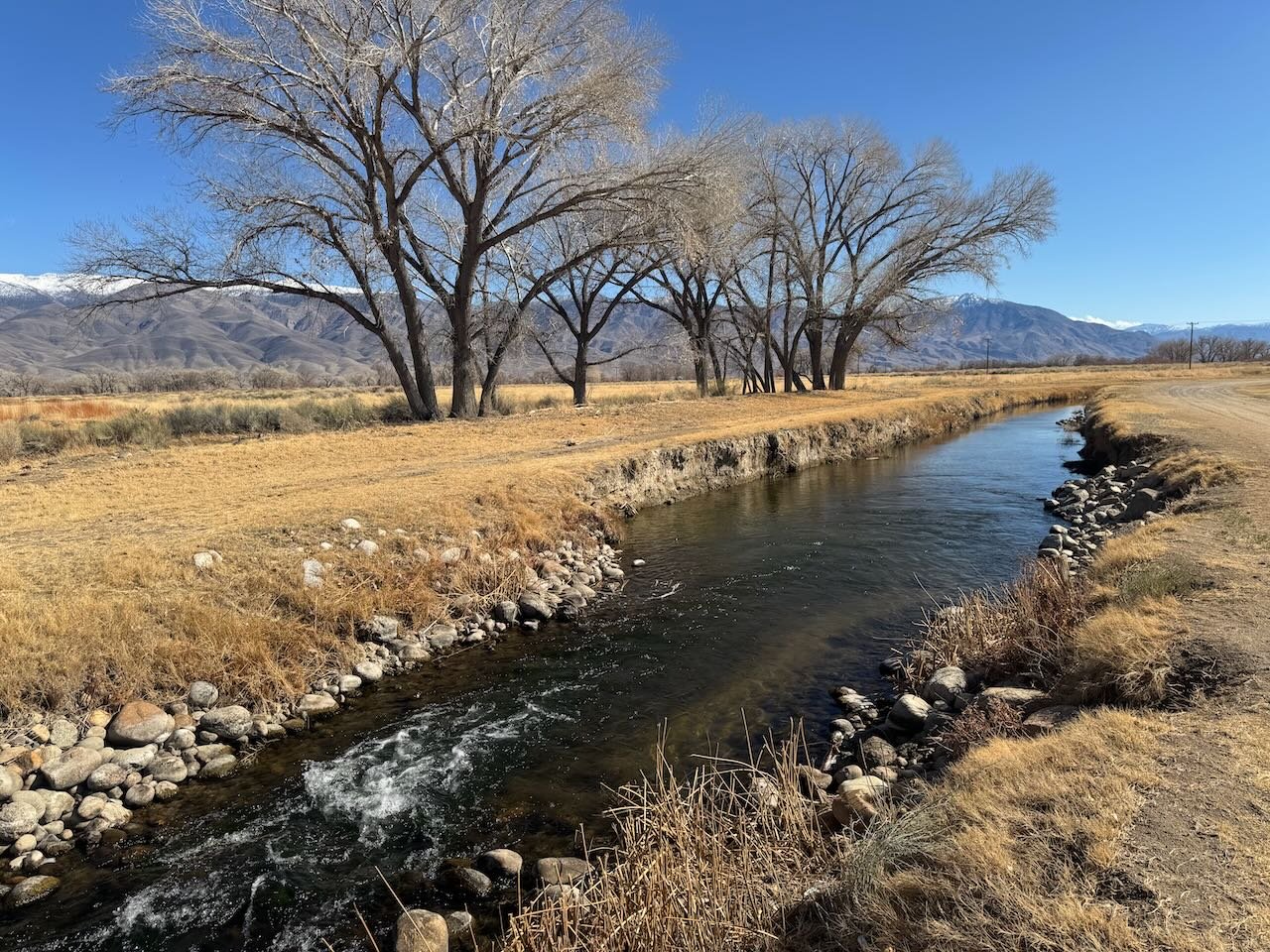It’s tough to predict what storms will actually leave on the ground after they move through the Eastern Sierra. It looks like this next storm could leave substantial amounts of snow at upper elevations. If this happens it could be the end of easy vehicle access to the waters of Long Valley. We will only know after the storm moves through the area. The mountains are in desperate need of a good snow pack to keep the streams flowing next summer. It’s mid-winter and hatches of mayflies, midges and winter skwala stoneflies are feeding wild trout and hold over stocked trout. Dry fly activity is just starting in Eastern Sierra waters. Update it’s snowing and raining in Bishop as off Thursday February 12, 2025.
While winter takes place in upper elevation waters, the lower Owens River offers mild weather fly fishing days.
Lower Owens River
Wild Trout Section:
Due to increased water levels of Crowley Lake and Pleasant Valley Reservoir, the lower Owens River flows have increased to 200 CFS. The flows are expected to return to flows of 125 to 75 CFS in the next couple of weeks. This week’s storms could effect when the flows will come down. Trout are feeding on blue wing olive hatches, winter skywalk and midges.. With the increased flows, look for the trout to be in the slower shallow sections. Size 12 stoner nymphs and size 14 copper Johns are good imitations of the winter skwala nymphs. Size 20 to 24 midge and pupae patterns in cream, zebra, tiger and blood colors imitates the Owens River midges. Size 18 olive quilldigons, size 18 bead head flash back pheasant tail nymphs and size 18 Jedi master bateis nymphs are good nymph imitations of the blue wing olive mayfly nymphs.
Flows of 200 CFS limits wading access on the lower Owens River.
Hot Creek
Interpretive Site:
Fishing has been good as the last storm did not keep fly fishers from accessing the Interpretive Site. Midges continue to be the main hatch feeding the trout. There is lots of surface feeding trout on the size 30 or smaller midges. Fly fishers do not have hooks small enough to imitate these midges. Griffiths gnats represent midge clusters on the surface of the creek. Fishing with size 20 Griffith’s gnats, olive or gray midge adult patterns are fooling a few wild trout on the surface of Hot Creek. Nymphing with size 18 olive quilldigons, size 18 bead head flash back pheasant tail nymphs, size 20 black SOS nymphs and midge nymph or pupae patterns in size 20 to 24 in tiger, zebra or blood coloration. Once the storm leaves the area we will know if we will have continued vehicle access to the Interpretive Site.
Hooked up in Hot Creek Canyon while fly fishing with a dry and dropper in one of the deeper holes.
Hot Creek
Canyon Section:
Nymphing with midge patterns and blue wing olive mayfly patterns is producing wild rainbows and browns. Tight line nymphing and dry and a dropper are both successful methods of presenting the nymphs to the trout. There are fish all through the creek. I cover all the water and in particular work the pockets above and below obstructions where trout are holding. Blood midges in size 20, tiger midges in size 20 and zebra midges in size 20, bead head flash back pheasant tail nymphs in size 18, olive quilldigons in size 18, olive SOS nymphs in size 20 and jedi master bateis nymphs in size 18 are fooling the wild trout.
It’s been a winter of driving right up to the river with little to know snow on the ground on the roads leading to the upper Owens River.
Upper Owens River
Above Benton Crossing Bridge:
Access has been good all winter, but that could change after the incoming storm leaves the Eastern Sierra. Because of the easy vehicle access this winter, fly fishing pressure has made the trophy rainbow trout easily spooked. The key to success is working deep holes, deep runs and cutbanks where the trout are feeding and resting. Thoroughly cover each spot before moving on to fish another spot. Sometimes it takes up to 100 casts before moving on. While a lot of anglers like to fish with worms, eggs and mop flies using larger nymph patterns produce a lot of trophy trout in the upper Owens River. Use size 14 golden/brown Pat’s rubber legs, size 12 variations of a gold ribbed hare’s ear, size 12 stoner nymphs, size 14 copper Johns and size 12 green/gold wire Prince nymphs. Resident trout are feeding on nymphs and dries of mayflies, caddisflies and midges. Use size 20 midge pupae or midge nymph patterns in blood, zebra or tiger coloration, size 18 bead head flash back pheasant tail nymphs and size 18 olive quilldigons.
In the afternoon, fish on the east bank of Bishop Creek Canal to keep your shadow off the water.
Bishop Creek Canal
Behind Bishop Veterinary Hospital:
Low, clear and slow moving water is making it hard to present a fly to the trout without spooking them. Key to fly fishing the canal is to fish deep holes or fast riffles. Your shadow can definitely spook trout. Place yourself on the right side of the canal so your shadow is cast on the land behind you and not on the water. The wild brown trout and holdover rainbows are taking size 20 blood midges, zebra midge and tiger midges, size 18 olive quilldigons and size 18 bead head flash back pheasant tail nymphs.





